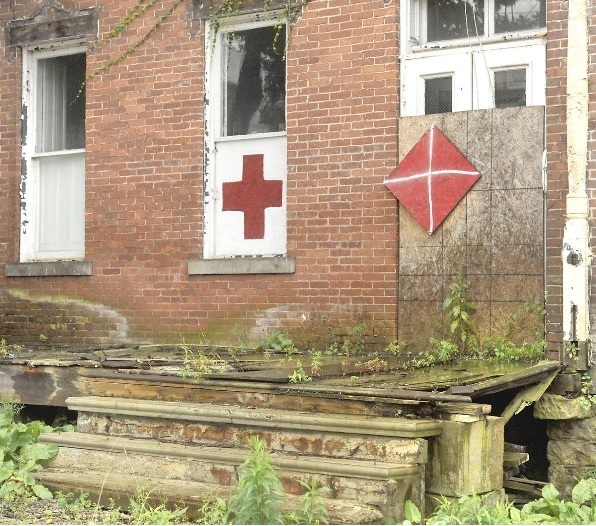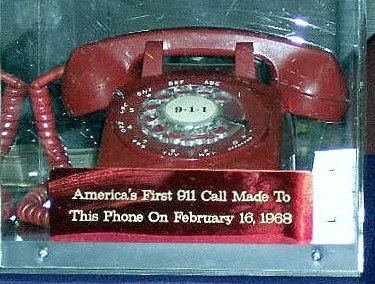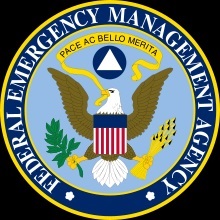History of U.S Emergency Management
Timeline of important events that help shaped current EM operations

1803 - 1st Federal Government involvement with local disaster
Congressional act passed to provide financial aid to Portsmouth, NH after devastating fire.
1889 - 1st Major response of American Red Cross

Johnstown, PA flood changed dam construction requirements as well as American law (Law changed from fault-based to strict liability).
1900 - 1st Federal govt. disaster mitigation efforts
Raised Galveston, TX city elevation 17' & built seawall to protect it from future hurricanes. Also led to the formation of the 1st city commission form of govt. formed in the U.S.

1917 - 1st Federal Flood control legislation - Flood Control Act
Only applied to Mississippi & Sacramento Rivers.

1932 - 1st Federal disaster repair/construction loans
Reconstruction Finance Corp (RFC) & Bureau of Public Works given authority to grant loans for repair & reconstruction of certain public facilities.
1936 - 1st Major Federal disaster protection commitment - Federal Involvement
Flood Control Act enacted due to major flooding in OH. U.S. Army Corp of Engineers put in charge of all Federal flood control measures; Dept. of Agriculture in charge of watersheds & soil erosion.
1941 - 1st Federal involvement in citizen protection
Office of Civil Defense created.
1947 - 1st U.S. Forestry wildfire suppression and fire research
Increased emphasis on fire research and the science of fire behavior. Also caused the development of new firefighting techniques and equipment.

1950 - 1st Federal Disaster Relief Program
Provided means of Federal Govt. to assist States and Local governments in alleviating suffering and damage resulting from major disasters. Only authorized the Federal assistance in disaster response efforts.
mid. 1950's - National Weather Service established in Miami, FL
Hurricanes Hazel, Diane & Audrey caused extensive damage in VA, HC, LA, TX and several mid-Atlantic states
1961 - 1st Federal approach to emergency preparedness established (OEP)
Hebgen Lake MT 7.3 earthquake & Hurricanes Donna & Carla increased awareness of growing risk of natural disaster. CAD also invented.
mid 1960's - 1st Federal consideration of community based mitigation
1964 Anchorage, AK 9.2 earthquake & 1965 Hurricane Betsy created discussion about lowering Federal post-incident assistance.
1966 - 1st Federal recovery legislation
Updated existing legislation and expand Federal assistance into the recovery arena.

1968 - 1st Federal National Flood Insurance Program (NFIP)
Gave low-cost flood insurance to citizens whose community joined the NFIP. Also restricted floodplain development & produced community floodplain maps.
1st 911 call
On 2/16/68, Senator Rankin Fite completed the first 911 call made in the United States in Haleyville, Alabama. On 2/23/68, Nome, Alaska implemented first 911 service.
1969 - 1st Federal Disaster matching grants
Authorized one-time matching grants to help States formulated better plans for coping with disasters.
1970 - 1st Federal regulations on worker safety & environmental protection
Approximately 14,000 occupational fatalities were being reported each year as well as 2.5 million job-related disabilities and 300,000 new cases of job-related illnesses.
1973 - 1st Mandatory flood insurance
Required property owners who were receiving mortgages from federally backed or regulated lenders and whose properties were located in a 100-year floodplain (the SFHA) to purchased flood insurance.

1974 - 1st Federal legislation that detailed Presidential disaster declaration process
The Disaster Relief Act of 1974 was passed into law by the then President Richard Nixon as a United States federal law that established the process of presidential disaster declarations.
1979 - 1st Federal cabinet level disaster agency - FEMA started
Created to centralize efforts and minimize disorder, duplicated efforts, confusion, and political power struggles.
1988 - 1st Federal specifically designed to bring an orderly and systemic Federal response to natural disasters
Provided assistance for state and local governments in carrying out their responsibilities to aid citizens in times of disasters.
1990 - 1st Federal oil pollution law
Oil Pollution Act of 1990 (OPA90) created comprehensive prevention, response, liability, and compensation policies for vessel and facilities that could cause oil pollution to U.S. navigable water purchase flood insurance.
1992 - 1st Federal plan to describe how Federal govt. will mobilize its resources to assist State and local governments during a disaster
Provided a systematic process and structure for coordinated delivery of Federal assistance to address the effects of any major disaster or emergency declared under the Robert T. Stafford Disaster Relief and Emergency Assistance Act.

2001 - 1st Activation of Federal Response Plan
Major turning point for the rapid advancement and coordination of emergency management.
2002 - 1st Federal terrorism legislation
Homeland Security Act established efforts to protect the U.S. from further terrorist attacks, reduce the nation's vulnerability to terrorism, and minimize the damage from potential terrorist attacks and natural disasters.
2003 - 1st Presidential directive to enhance the ability of the United States to manage domestic incidents
Described federal policies, and objectives; identified steps to improve federal, state, and local incident coordination; and directed the Secretary of Homeland Security to create a National Response Plan and National Incident Management System.
1st Presidential directive to deal with domestic terrorism preparedness, prevention & response
Required the HS Secretary to develop national All-Hazards preparedness goals & readiness metrics and elements. Also required Federal agencies to provide financial/technical support to states & develop first responder standards to meet Federal preparedness goals.
1st Presidential directive to require a national strategy for public health and medical preparedness
Established federal agency planning requirements for public health and medical preparedness, bio-surveillance, countermeasure distribution, mass causality care, and community resilience.

2004 - 1st Federal plan to use stakeholder feedback & disaster lessons learned
Enhanced National Response Plan (NRP) principles through concept that an effective incident response is a shared responsibility of all level of governments, the private sector and Non-Governmental Organizations (NGO's) and individual citizens.
2006 - 1st Federal law that amended the Stafford Act
Established new leadership positions and position requirements within FEMA, brought new missions into FEMA & enhanced the agency's authority by directing the FEMA Administrator to undertake a broad range of activities before and after disasters occur.
1st Federal legislation that mandated disaster pet evacuation policies
Ensured that State and local emergency preparedness operational plans address the needs of individuals with household pets and service animals following a major disaster or emergency.
2008 - 1st Federal plan to use stakeholder feedback & disaster lessons learned
National Response Framework (NRF) enhanced NRP principles through concept that an effective incident response is a shared responsibility of all level of governments, the private sector and NGOs, and individual citizens.
2013 - implementation of Sandy Recovery Improvement Act
Authorized several significant changes to the way FEMA can deliver federal disaster assistance to survivors. Specifically provided greater flexibility in federal fund use for Public Assistance applicants with less administrative burden and costs for all parties.
Sped debris removal and encourage pre-disaster debris planning
Gave applicants the option to request binding arbitration for certain projects with any amount in dispute of over $1 million after first appeal.
Simplified small threshold PA procedures.
Addressed reimbursement for straight time force account labor costs for state, tribal and local government employees performing emergency protective measures.
2014 - Implementation of 2 C.F.R. Part 200
Provided guidance on the administrative aspects of federal grants (e.g. how grants are awarded, managed, audited, and closed-out).
Provided one set of Uniform Administrative Requirements, Cost Principles, and audit requirements for federal awards and sub-awards to all non-Federal entities (i.e., states, local governments, Indian Tribes, institutions of higher education, or nonprofit organizations that carry out federal awards).
For Profit entities are subject to 2 C.F.R. Part 200, Sub-parts A through E.
2018 - Implemented Disaster Recovery Reform Act
Acknowledged the shared responsibility of disaster response and recovery & aimed to reduced the complexity of FEMA & build the nation's disaster response capacity. Provided greater mitigation investment, reduced risk from future disasters after fire, increased state capacity to manage disaster recovery & provided greater flexibility to survivors with disabilities.